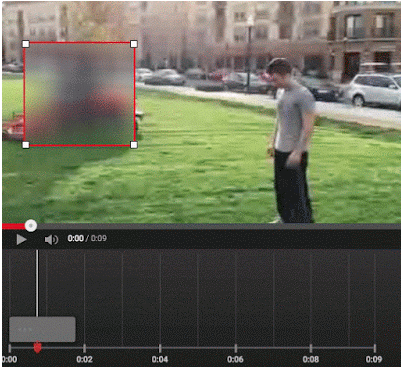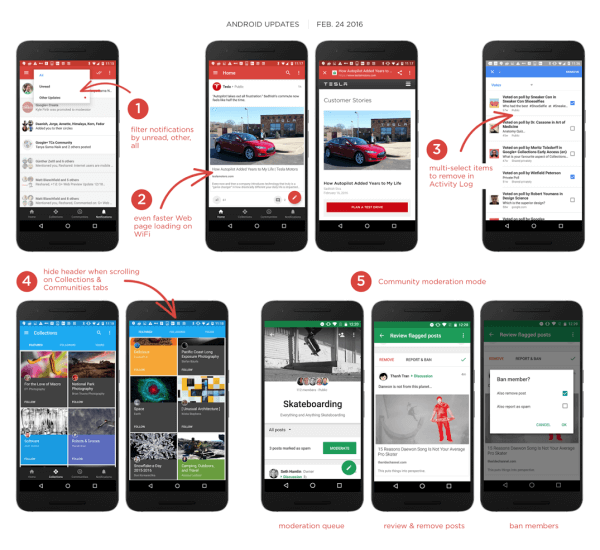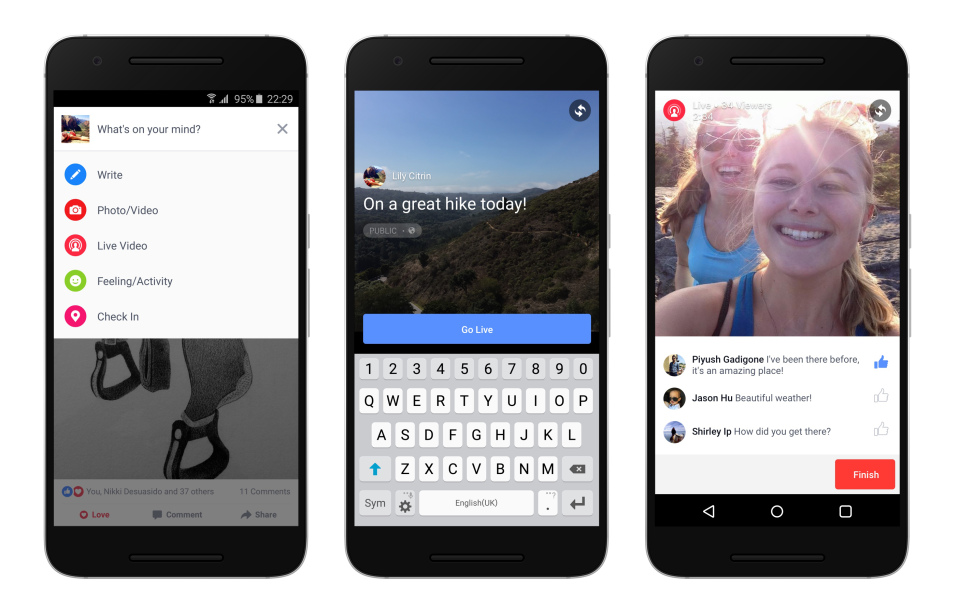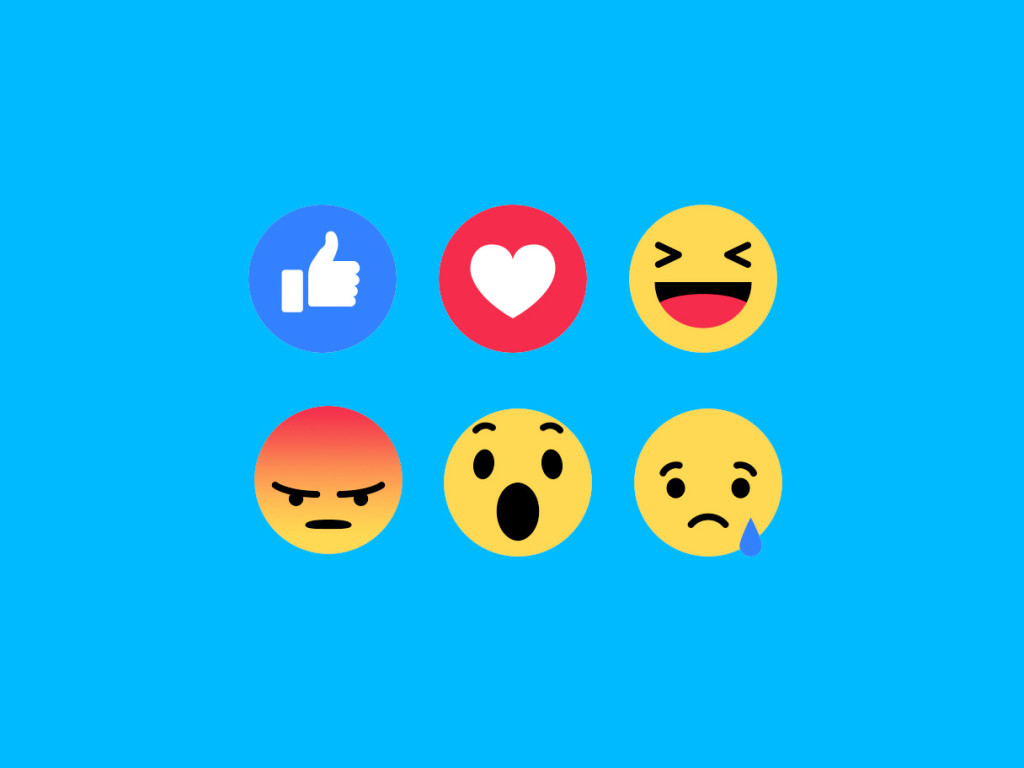The week in social: Facebook Reactions, Snapchat geofilters, and YouTube blurring
Snapchat introduces geo-filters for purchase
Snapchat has introduced a new filter option that applies not just for marketers, but for all general users, called On-Demand Geofilters. Starting at a price point of $5, users can design a filter, and choose a geographic range in which it will appear for all users around them. All designs have to be submitted to the Snapchat staff for review, and factors that affect the pricing include how large a radius the geofilter is applied to, and the amount of time it remains active.
More information on Snapchat blog.
Pinterest improves recipe and movie pins
As part of a blog post that introduced top trending recipes for users to make during the Oscars, Pinterest has introduced a wider variety of information that can be applied to recipe and movie pins. Recipe pins now have information such as cook time and required ingredients, while the amount of movie pins that feature supplemental information like cast and ratings has doubled. According to the post there are now over 4 billion recipe pins and 33 million movie pins on the platform.
More information on Pinterest blog.
YouTube adds new tool for blurring objects in videos
A new tool that is bound to be popular for creators, YouTube has introduced a blurring tool that can obscure objects in frame within a video. The blurring can also follow particular objects throughout the video. This can help from a copyright perspective, if a brand wanted to blur out a competing logo, or for just the general creator that may want to censor something in a new upload. The blurring box can be changed in size, and it can also be locked in place. This is an extension of the feature that blurs all faces in a YouTube video, something that was introduced back in 2012.

Read more on YouTube Creator blog.
Facebook introduces Canvas ad format for mobile
Facebook has put an increasing amount of resources around its mobile ad products in recent years, and its new Canvas format is the next step to making immersive ad experiences for users on mobile. The format is “post-click”, meaning if a user clicks a normal looking ad unit on mobile, it will bring them to a full screen, or canvas, of the brand experience. Once on the separate page, users can see be served of different media that is meant to take more of a content marketing approach to telling a brand story. The Canvas ads use Facebook’s video loading technology to load assets on the ads faster than would be possible through the mobile web, according to the company.
More information on Facebook Media.
Google+ app is updated for Android
Google+ introduced a series of small updates on its Android platform earlier this week. Amongst the updates include the ability to delete multiple items from the activity log at once, the fixing of 10 separate bugs, new community moderation tools, and faster web browsing on wifi. In addition to these new features, the search autocomplete feature, which was previously disabled, has been turned back on after a separate bug fix. The post was provided in the form of a Google+ post from an employee at the company, Luke Wroblewski.

Read more on Google+.
Instagram now has over 200,000 advertisers
Announced through a blog post earlier this week, Instagram shared that they had reached 200,000 unique advertisers, since opening up its ads platform to all users in September 2015. The blog post went on to provide examples of different advertising objectives, such as direct sales, brand awareness, and application downloads. Data from Instagram also shows that 60% of users learn about products and services while on the platform, with a greater percentage at 75% take an action based on posts they enjoy.
More information on Instagram business blog.
Facebook Live gets a wider rollout
Facebook Live, the live-streaming competitor created by the company as an answer to Meerkat and Periscope, has been rolled out to the Android platform, and over 30 countries. Part of the reason for rolling out on Android in addition to platform synonymity is because over 50% of the people watching Facebook Live videos are on the Android platform, according to the post issue by the company. Users can start a Live video at any time, and it is preserved on the timeline in the same way as a regularly uploaded video.

More information on Facebook Newsroom.
Twitter updates the embedded timeline feature for websites and apps
Twitter is preparing an update to how tweets are embedded across web and other mobile app properties. The new timeline that can be embedded has a new design, and is backed by responsive code so it can be re-shaped and sized to look appropriate on multiple displays. Media such as photos, videos, GIFs, and polls can be seen in an expanded view, and profiles, lists and collections will also be available to be shown off within the new design. The new featured are planned for a March 3rd launch.
More information on Twitter blog.
Facebook rolls out Reactions to all users
Facebook reactions, the answer to users’ cry for a “dislike” button, has been released worldwide. The feature was tested in small batches in closed geographies towards the end of 2015. An expansion to the ability to “like” a post, the new reactions include Like, Love, Haha, Wow, Sad and Angry. Mark Zuckerberg previously commented that many times, users want to express different emotions and reactions to a post, and that the “like” was not always the most appropriate, especially for a sad or angry post. Facebook used a host of data about how users react to content, and what types of stickers and comments are made on posts to decide what reactions to offer.

More information on Facebook Newsroom.
Study shows which Instagram filters are the most popular
According to data from Canva, a company behind a graphic design program, Claredon is the most popular Instagram filter, analyzed by looking at over 1 million photos shared on the service. Other highly used filters include Gingham, Juno, and Lark in the United States. Other interesting facts include that Valencia is the most popular filter used for nature pictures, and selfie photos that feature no filters garner the highest average amount of likes, at 78.
Read more on Social Times.